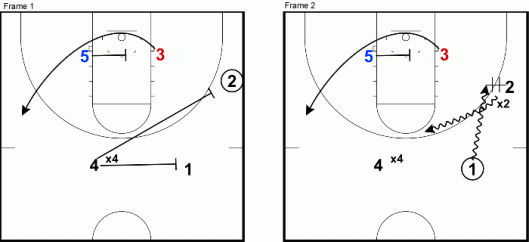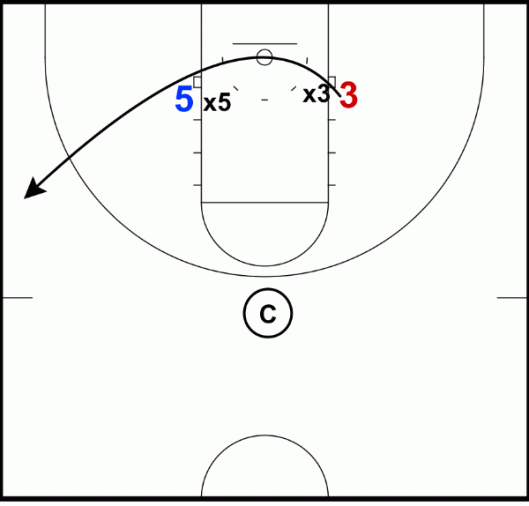I have been both humbled and delighted by the feedback and praise given to Part 1 and Part 2 of this Yankee Blog Series.
It has reminded me that coaches are in love with learning about the game, and it has made me feel good to be able to share some of what I learned in my career.
My good friend, Jerry West (whose new book, ‘West by West: My Charmed, Tormented Life‘ hits stores this week), is one of the most detail-oriented people I have ever known. After looking at Yankee, he offered valuable insight based on something he had success with in his days as a player for the Los Angeles Lakers.
Jerry would run down the floor, put his head underneath the rim, and face out toward the action (back to the baseline). He could then read the defense and decide whether to use the single screen from the 5, or use a double screen from 1 and 2 on the other side (‘Floppy’ Action) to get himself open.
The simplicity of Yankee makes it very easy for players to make adjustments like this without having to think too much. This simple tweak got me thinking about other options and counters we used. Here are a few to consider:
Counters
One way defenses would try to defend Yankee was to stop ball movement by denying the reversal to 4. Some defenses would even go so far as to deny both 2 and 4. When this occurred we used these simple counters to get the ball reversed:
- Frame 1 – If the defense works hard to deny the ball to 4, immediately go to a ball screen for 1 or 2 to get the ball reversed.
- Frame 2 – If the defense works to deny both 2 and 4 down the floor, 1 enters into a dribble handoff with 2.
Zone Options
Another way teams would try to neutralize Yankee was to play Zone defense and get set quickly in Transition. Our adjustments to Yankee against a Zone are detailed below:
- Frame 1 – We look for this quick hitter every time down the floor. 5 flashes to the high post looking for a hole. The key is for 1 to push the ball quickly up the floor and for 3 to try and seal the defender. We are trying to create an advantage by overloading a side.
- Frame 2 – If nothing is open, we swing the ball quickly to 3 who has made his cut. 5 resumes spot on the block and 2 cheats to the short corner.
- Frame 3 – If we don’t have anything, 4 pins down in the lane for 5 and 1 cuts to the top to receive the pass from 3.
- Frame 4 – 4 seals low and 5 looks to hit 5 in the high post for a high-low or pass directly to 4 in the low post.
Drill Work
The key drill we would use to practice Yankee is, like Yankee, incredibly simple.
Coach starts with the ball. Boss Man (3) runs normal Yankee cut (stopping under the basket to read how x3 will defend), and the coach enters the ball to 3 or 5. You then let them play 2-on-2 live. Run this drill 5 to 10 minutes per day and let them read, suggest and play.
I hope you have gotten something you can use out of the three parts of this Yankee Blog Series, and if there are any questions or discussion you would like to involve me in, please feel free to comment at the bottom of this page. The next Blog Series will be on our ‘2-Game’ Offense which we would go right in to after running Yankee.




You must be logged in to post a comment.